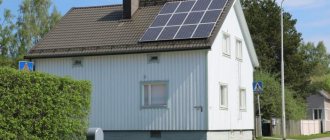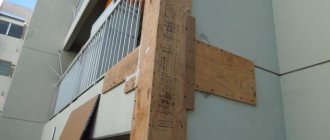Definition of concepts: what is it?
Housing: a particularly important type of real estate that ensures the housing interests of Russians is housing.
The wording of the category is given in the current legislative acts:
- Russian constitution;
- Articles 288 and 558 of the Civil Code of the Russian Federation;
- Clause 2, Article 15 of the Housing Code (Housing Code) of Russia.
A dwelling is an isolated part of a building that belongs to real estate and provides conditions for year-round permanent residence of people in it. Indispensable conditions for assessing a premises as a home are compliance with sanitary, urban planning, technical and fire safety standards necessary for the comfortable and safe living of citizens.
Non-residential premises are premises belonging to the non-residential fund and used for cultural, trade, medical, household or administrative purposes. Such spaces are part of buildings (residential or non-residential), but such objects are not used as places of residence.
Non-residential real estate is not included in the common property of the owners of multi-apartment properties.
Transfer to non-residential. Where to begin?
You need to start transferring to non-residential with consultation with specialists to understand whether this object can be transferred at all.
If the specialist believes that there are no serious obstacles to the transfer, a meeting of apartment owners in the apartment building is held. Only after the neighbors at a general meeting decide to transfer the premises to non-residential use can a reconstruction or redevelopment project be ordered.
You can read more about how to carry out redevelopment in non-residential premises here.
After this, you can submit documents to the administration to obtain permission to transfer the premises to non-residential use.
If the administration approves the transfer, the apartment is redeveloped. After its completion, a commission visits the site, checks how well the finished premises correspond to the project, and draws up a report of completed work. After this, the cadastral engineer prepares a new technical plan for the property, which the owner must submit to Rosreestr in order to register the premises as non-residential.
What are the differences?
The difference between residential and non-residential premises lies in the purpose of the real estate. Residential premises are used as places of permanent residence, in contrast to non-residential premises intended for commercial purposes, used as places for storing materials and goods, and the location of trade, administrative and public organizations.
A dwelling - an apartment, part of a household or a private house, due to its main purpose, must be located in a residential area and be in good technical condition. Building structures must provide load-bearing capacity for the safety of people permanently staying in housing, and must not have destruction or damage.
The procedure and problems of changing the status of residential premises
Created: May 28, 2021 Updated: May 29, 2020
At the legislative level, the concept of residential premises is enshrined in the Housing Code of the Russian Federation (hereinafter referred to as the Housing Code of the Russian Federation).
In accordance with Part 2 of Article 15 of the Housing Code of the Russian Federation, residential premises are understood as isolated premises, which are real estate and are suitable for permanent residence of citizens. Having analyzed the provisions of the above Part 2 of Article 15 of the Housing Code of the Russian Federation, we can conclude that a residential premises is a premises that has a number of characteristics: isolation, classification as real estate, suitability for permanent residence of citizens.
The legal definition of the concept of “non-residential premises” in an apartment building is given in the “Rules for the provision of utility services to owners and users of premises in apartment buildings and residential buildings”, approved by Decree of the Government of the Russian Federation of May 6, 2011 No. 354, in the provisions of which non-residential premises are called “premises in an apartment building” house, specified in the design or technical documentation for an apartment building or in the electronic passport of an apartment building, which is not a residential premises and is not included in the common property of the owners of premises in an apartment building, regardless of the presence of a separate entrance or connection (technological connection) to external utility networks - technical support, including built-in and attached premises.”
The Unified State Register of Legal Entities registers new legal entities every day. However, the pace of construction of new real estate is significantly slower than the pace of increase in the number of legal entities. Moreover, the cost of renting non-residential premises is often too high, and therefore some legal entities cannot afford it. Perhaps it was the above factors that served as the conditions for popularizing the process of transferring residential premises to non-residential premises (hereinafter referred to as transfer).
The intended purpose of premises recognized as residential in the manner prescribed by law is the residence of citizens, which is fixed by law. In order to use it for other purposes, a number of provisions must be observed, such as: the use of the relevant dwelling only by citizens living in it, respect for the rights and legitimate interests of other citizens, compliance of activities with sanitary and hygienic, environmental requirements, as well as fire safety requirements. The legislator allowed the owner of residential space to locate various institutions and (or) organizations, as well as to use it to carry out professional or individual entrepreneurial activities, but only in premises that have undergone the appropriate transfer procedure, in the manner prescribed by law.
At the same time, the law prohibits the location of industrial production on the territory of residential buildings.
The transfer procedure is regulated by Chapter Three of the RF Housing Code, which establishes the necessary conditions for it, its procedure and the grounds for refusal. Federal Law No. 116-FZ dated May 29, 2019, which entered into force on June 9, 2019, changed the procedure for transferring residential premises to non-residential premises.
Transfer is possible if the conditions specified in Art. 22 Housing Code of the Russian Federation. Thus, by virtue of Part 2 of this article, translation is prohibited if:
— access to the premises being transferred is impossible without the use of premises that provide access to residential premises;
— there is no technical possibility to equip such access;
- the premises being transferred are part of the residential premises;
- such premises are used by the owner or another citizen as a place of permanent residence;
- the ownership of the transferred premises is burdened with the rights of any persons.
The transfer of an apartment in an apartment building to non-residential premises is permitted only in cases where such an apartment is located on the first floor of the specified building or above the first floor, but the premises located directly below the apartment being transferred to non-residential premises are not residential. There must be free access to all utilities or the ability to provide it; the apartment must comply with all sanitary, hygienic and fire requirements.
There must be all permissions for redevelopment if it was done before the change in the status of the premises. The residential premises do not belong to a rented house for social use. It is prohibited to transfer premises from residential to non-residential for religious activities. It is prohibited to change the status of a room located in a building that is being prepared for demolition. It is also impossible to transfer part of the premises.
However, in practice, a number of complications arise during this procedure and after its implementation. One of the main problems of transfer is the owners of the house in which the transfer is planned. If a mandatory element of the transfer is its redevelopment, then the local government body may refuse to approve the redevelopment project in the absence of the consent of the owners.
The legislator added to the Housing Code of the Russian Federation not only the conditions for transferring the residential premises of an apartment building into non-residential ones, but also the list of necessary documents in accordance with Part 2 of Art. 23 Housing Code of the Russian Federation. The owner will be required to provide the local government body with: minutes of the general meeting of owners of premises in the building, at which the transfer of residential premises to non-residential status was approved; written consent of each owner of all apartments adjacent to the future non-residential premises.
Consequently, without surveying the majority of apartment owners in apartment buildings, it will no longer be possible to transfer one of them to the status of non-residential premises. If at least one neighbor refuses such a transformation of the adjacent living space, then it will no longer be possible to convert the apartment into non-residential premises.
In Art. 23 of the Housing Code of the Russian Federation, a separate part has appeared, which describes in detail which premises are considered adjacent and how its owner must express his consent to the transfer of a neighboring apartment to non-residential premises. Adjacent is any room that has a common wall with an apartment changing its status, as well as those located above and below it. The owners of all these premises must express written consent to the transfer of the apartment to non-residential premises. Consent is given in any form. In written confirmation of consent, the owner of the adjacent premises must include: last name, first name and patronymic, passport details - for individuals; name and main registration number - for a legal entity, as well as the number of the premises owned by it and details of documents confirming ownership.
Corresponding amendments have also been made to the articles of the RF Housing Code concerning the holding of a general meeting of premises owners. Thus, the competence of the general meeting of owners includes a decision on consent to the transfer of residential premises to non-residential premises - in Part 2 of Art. 44 of the RF Housing Code included clause 4.5.
It turns out that an owner who wants to convert a residential property into a non-residential one will be able to do this only if at least ⅔ of his neighbors at the entrance come to the meeting, and all those present cast 50% + 1 vote in favor.
This will also complicate the work of owners of hostels and hotels located in apartment buildings, the premises of which are considered residential. According to the Federal Law of April 15, 2019 No. 59-FZ, from October 1, 2021, changes were made to Part 3 of Art. 17 of the Housing Code of the Russian Federation: it is prohibited to set up hotels in residential premises, as well as to use residential premises in apartment buildings for the provision of hotel services.
It should also be remembered that the reconstruction of a living space - for example, installing a new entrance in accordance with the requirements of Part 2 of Art. 22 of the Housing Code of the Russian Federation - when using part of the common property of the owners of an apartment building, it also requires that the owner of such premises bring the issue to the general meeting of the owners of the premises. When reducing the area of the common property of the house, he will need the consent of 100% of the owners in the house. In the absence of the specified documents, including minutes of the general meeting of premises owners, the use of residential premises as non-residential premises or its reconstruction will be illegal.
Thus, translation is a long-term and costly activity that requires painstaking work both before and after it. This institution of law needs coverage in the media. Many problems and consequences are associated with the legal illiteracy of the population in this matter.
Comments
- Comments
- In contact with
Download SocComments v1.3
Add a comment
JComments
Signs characteristic of each category
So, what are the main features that allow us to differentiate them from each other, and what are they?
Dwellings are characterized by features that provide the possibility of normal life in these objects:
- immovable nature of property;
- availability of rooms;
- the location of auxiliary units in them to provide citizens with living and other conditions;
- equipping houses with an elevator - for buildings with more than five storeys;
- the presence of an isolated circuit, but with the possibility of access to common areas - to the corridor, to the stairs, to the yard;
- providing housing with the necessary utility rooms for its maintenance.
According to Article 16 of the Code of Legislative Acts on Housing - the Housing Code of Russia - the main types of residential premises include a house or a certain element of household ownership, a room, an apartment (or part thereof).
The classification of housing allows us to divide it into places of permanent and occasional (non-permanent) use as a habitat. The first type includes dwellings that are state (municipal) property, as well as those belonging to citizens or included in a housing cooperative or residential complex.
The second category is represented by rented premises, sublease facilities, dormitories, and office housing, which must be vacated after a while.
Non-residential built-in and attached parts of residential buildings or elements of non-residential complexes are characterized by:
- signs of their isolation;
- attitude towards real estate;
- purpose - not for human habitation, but to ensure social or production purposes;
- location - in residential and non-residential buildings, which distinguishes them from buildings;
- suitability for use in accordance with the requirements of regulatory documents.
Just like housing, non-residential premises must be registered as real estate . Such real estate implies the possibility of its use either as a separate object, or to provide auxiliary needs of the main one. The category of main non-residential space, for example for a clinic, consists of medical and diagnostic offices, chemical and biological laboratories, and physical treatment rooms.
The main functions of the clinic are served by auxiliary spaces of the cloakroom, corridors, toilet rooms, lobby, etc. In the rented premises of the institution there are other auxiliary isolated areas, the purpose of which differs from the main direction of the entire non-residential facility. These are shopping pavilions, pharmacies and other spaces arranged under a contract.
What are apartments
On the Russian real estate market, the concept of “apartments” appeared relatively recently. It is generally accepted that a similar term is used to describe an elite apartment, but the legislation defines it completely differently.
Apartments are a type of non-residential premises that provide the necessary conditions for living and conducting activities.
According to the law, for real estate to be considered an apartment building, its area must be over 40 square meters. In this case, it is necessary to have a bathroom and a kitchen.
Apartments—what they are according to the law, says a real estate expert:
Legal status
The legislation deciphers this concept rather poorly. In 2011, Order No. 35 of the Ministry of Sports was issued, which prohibits considering apartments as a separate type of real estate. If we are guided by the act, then such real estate is a comfortable room in any of the accommodation facilities.
In practice, experts distinguish 4 types of such real estate:
- the apartments themselves,
- service (for example, hotels),
- apart-hotels,
- condo hotels.
The first three types of premises are usually rented out for short-term rent. They should provide hotel services and comfortable living conditions. Condo hotels are intended to be purchased as real estate.
Property type
In accordance with the law, apartments are registered as non-residential real estate, that is, their status is similar to shops, offices and warehouses. From this follows a number of features that distinguish them from an ordinary apartment.
What is the total area for both types of real estate?
Area is the main parameter for carrying out technical inventory and statistical accounting of both types of real estate in the Russian Federation. Calculations for the consumption of utilities, rental housing, and repair work are also carried out based on the value of this indicator.
The total area characterizes the scale of housing construction in the country, represents the basis for determining property taxes, etc.
The instructions on the implementation of accounting operations for housing facilities in Russia (Order of the Ministry of Land Construction of Russia No. 37, dated 08/04/1998) regulate the following:
- The square footage of the apartment includes the area of all residential and utility rooms included in it, together with balconies, unheated storage rooms, loggias, verandas, and vestibules. Utility rooms are combined or separate bathrooms, bathrooms, kitchen spaces, corridors, built-in wardrobes.
- For a residential building, this indicator is the sum of the areas of individual apartments.
- The total area of the dwelling is equal to the sum of all its areas (residential and auxiliary use) with the exception of the space on the balcony, terrace, veranda or loggia according to the Housing Code of Russia - Article 15, paragraph 5). The cadastral passport indicates this type of property characteristics. It is also a characteristic of the object entered into the register of rights.
- The total area indicator for a building is calculated by summing similar values for all apartments.
- The area of living rooms in an apartment constitutes its living area, and the apartment-by-apartment values of this value for the entire house constitute its living area.
The design parameters of the premises are determined by measurements and taken into account to one decimal place. Payment for utility services for non-residential premises, with property rights registered to a certain person, is made on the same basis as for residential premises. The determining factor, in this case, is their total area including loggias, terraces, and balconies.
The indicator is determined by summing the square footage of all rooms, which are a single whole. When calculating, area reduction indices are used : for terraces and balcony spaces - 0.3, and 0.5 - for loggias. The measurement results taken on the inner surface of the external load-bearing walls form the basis for the calculation.
What is classified as auxiliary space at facilities?
The auxiliary (auxiliary, non-residential) area in a private house consists of the square footage of the toilet and bathroom, storage room, corridors, and kitchen area. The same parts of the space are considered non-residential and in the apartment. The use of non-residential space is dictated by the need to ensure real year-round habitation of people in such a home. Unheated areas of a garage, basement, or attic of a private house do not fall into this category.
For an apartment building, the wording “non-residential area” is often confused with the category of public spaces (common areas).
Such concepts, regulated by the Rules for the maintenance of real estate objects (Resolution of the Government of Russia of August 13, 2006, No. 491), include stairs and platforms on them, elevator shafts, places for storing strollers, bicycles, technical floors and technical basements.
The non-residential area of an apartment building is determined by summing the square footage of the built-in non-residential premises with the commercial objects located in them that are part of it. The calculation of the area of shops, pharmacies, restaurant businesses, banks, gyms is carried out according to general rules, provided that their height is at least 1.8 meters.
Owners: difference in rights and responsibilities
Owners of residential and non-residential premises have similar legal obligations and rights, justified by legislative norms. For homeowners, these categories are most fully disclosed in Article 30 of Chapter 5 of the Housing Code (Housing Code) of Russia, which states:
- the exercise of the right of ownership, disposal and use of residential premises must be carried out in accordance with its purpose and limited to its limits;
- it is available to the owner of residential property to provide it for use to other persons on contractual rights of lease, lease, or transfer it for free use on the basis of the letter of the law;
- the owner’s responsibility is to maintain personal real estate and common property in the apartment building in accordance with the standards;
- the homeowner must respect the interests of his neighbors;
- It is the responsibility of the owner of residential property to properly manage MSW (municipal solid waste) in accordance with the requirements of housing legislation.
The burden of expenses for maintaining the local area and common property falls on all owners of premises, regardless of the category of ownership - residential or non-residential real estate.
The owner of the office, as a rule, does not use the garbage chute or elevator, but he is obliged to pay a monthly fee for its maintenance in accordance with the agreement concluded with the HOA. Not only obligations, but also rights apply to the owner of non-residential real estate. Thus, he can participate in general meetings, choose a management company, decide on repairs, etc.
Such an owner has the right to enter into an individual agreement with resource supply companies, but can receive water, gas, heating or electricity by agreement with the HOA.
The intended purpose of housing and non-residential parts of buildings is taken into account at the design stage in the design and estimate documentation. The project calculates and fixes the possibilities for implementing the functions of different types of premises.
Complex case of transfer to non-residential property
Today it is almost impossible to transfer apartments that do not have a separate entrance to non-residential use. The construction of a separate entrance, the construction of a porch and a ramp, for which part of the land plot has to be occupied, is recognized as reconstruction. To carry it out, you will need to obtain the approval of all apartment owners in a residential building.
Gathering such consent is an almost impossible task. There may be 300 apartments in a building, and there are almost always owners who do not live in the apartment permanently and may be abroad at that time. Somewhere, an apartment could be inherited, but the new owner has not yet assumed his rights. There is no one to get consent in this situation. So the management company cannot always collect one hundred percent of the residents’ signatures.
After this, you will need to prepare a reconstruction project, coordinate it with various supervisory organizations from fire departments to the SES, obtain permission to carry out the work, and then a certificate of completion of the work. All this significantly complicates the transfer to non-residential premises without a separate entrance and makes this task almost impossible.
“We would not undertake the transfer of apartments in five- or nine-story buildings. For now, only apartments located on the first floors of new buildings can be converted into non-residential buildings quite easily. They already provide everything necessary for such use: a separate entrance and porch are made, a fire alarm is installed,” says Andrey Lopatin.
To transfer non-residential premises that already have a separate entrance, you will need:
- application from the owner to transfer the premises to non-residential use;
- title documents for the apartment (originals or notarized copies);
- floor plan of the house and technical passport of the apartment;
- a reconstruction or redevelopment project, if the apartment will be converted into an office or store (performed by a design organization that is a member of the SRO and has access to this type of work);
- minutes of the general meeting of owners of premises in an apartment building with a decision to approve the transfer;
- written consent of all owners of premises adjacent to the apartment (drawn up in free form, indicating the full name of the owner of the premises, his passport details, apartment number, details of title documents for the apartment).








